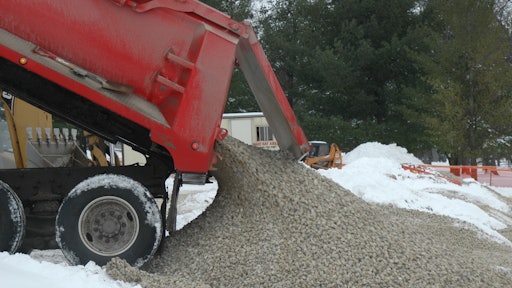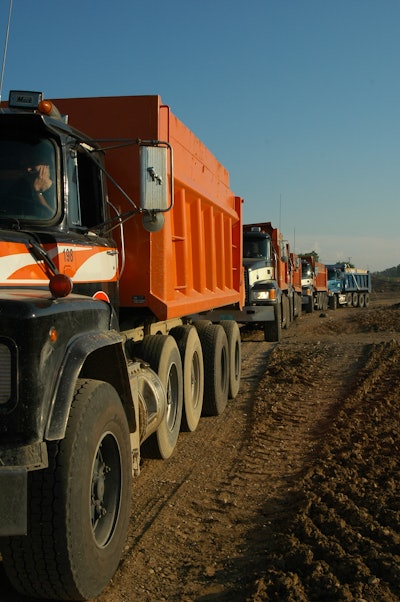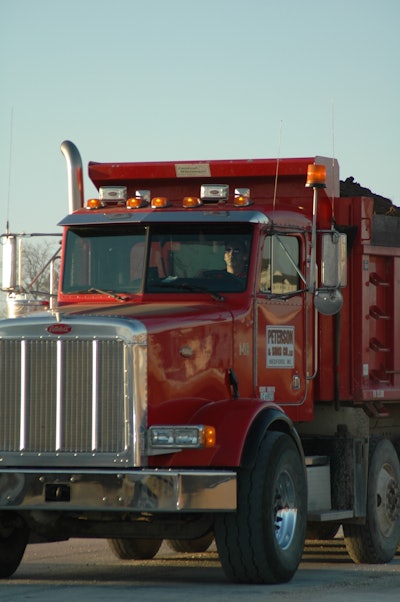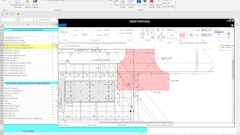
The paper ticketing process for managing material transport has long been rife with inefficiencies. It has spawned a trend toward use of platforms that digitize the ticketing process — a trend that has gained even more prominence during the COVID-19 pandemic.
“Chasing paper down is an age-old industry challenge that, quite frankly, should have been resolved before the coronavirus sped up digitizing data on paper tickets,” states Steve Cox, vice president of business development, Command Alkon, a company that provides software and technology solutions designed to drive value across the heavy work supply chain. “Removing paper from business processes improves productivity, eliminates errors and speeds workflows.”
Electronic or “e-Tickets” provide a real-time digital representation of a material’s load information. “The e-Ticket stays in sync with the load’s journey, capturing order information, batch results, delivery status updates, electronic proof of delivery, inspection/test results and job cost/cost codes through invoice and payment processes,” Cox explains.
This real-time information is made available to all participants within the supply chain. According to Cox, this means “businesses and their trading partners have greater visibility to what is going on within the project life cycle.”
Delivering Fewer Errors Plus Time Savings
With paper tickets, truck drivers will typically drive a load across a scale, get out of the truck, enter the scalehouse to pick up copies of a paper ticket, return to the truck and drive off.
“As the truck gets to the jobsite, the driver would get out, scribble his name, the type of material, the quantity, the date; somebody would scribble their name as accepted,” says Cliff Fetner, founder and CEO of Soil Connect, a digital marketplace developed to resource and move dirt and other building materials. “At the end of the day, all of these manual, handwritten tickets would find their way into the office — or hopefully, they all find their way into the office.” Lost or misplaced tickets are a common issue.
 A study by TruckIt showed turn times for trucks is faster when full-featured, contactless e-Ticketing platforms are used.
A study by TruckIt showed turn times for trucks is faster when full-featured, contactless e-Ticketing platforms are used.
This inefficiency led Soil Connect to launch a new e-Ticketing service as part of its digital marketplace. The plan is to digitize the entire materials delivery process to eliminate the headaches and save time.
“All of this information will be captured through GPS and the only thing that truck driver needs to do, very simply, is get to the jobsite, hop out of his or her truck, take a picture of the material with his or her phone, and the operator, project manager or owner [will] sign on his or her phone that he or she has accepted the load. That’s it. Then the truck driver will go on to the next stop,” Fetner explains. At the end of the day, all the information is uploaded and an invoice automatically generated.
The time saved can add up quickly. “For example, if you have five trucks on the road and each truck makes five stops, that’s 25 tickets just in one day,” says Fetner. “When you think about the time it takes to figure out the pricing and the material and who the client is and who signed for it, create all those invoices and then upload it — [even] if you figure each ticket takes 10 minutes, for 25 tickets that’s 250 minutes.” In other words, more than a four-hour time savings.
Turn times for trucks is also faster when full-featured, contactless e-Ticketing platforms are used, according to a study conducted by TruckIT. “The easy way to look at it would be when a truck is at a quarry and it’s getting weighed, [the driver] is getting out of the truck and getting that paper ticket,” says Davis. e-Ticketing eliminates the need to leave the vehicle. “We saw on average they were saving nine minutes per load. [This] doesn’t sound like a lot of time, but when you’re doing eight to 10 loads a day, it adds up.
“[e-Ticketing] just makes the entire system, the supply chain, more efficient,” he continues. “It’s the trucks getting in and out of locations faster. You don’t have any lost tickets, in theory, and you get rid of all the paper management and reconciliation processes that the scalehouses, drivers, contractors, inspectors go through. It’s getting rid of a ton of [lost] time and making it less error prone, as well.”
For Soil Connect, e-Ticketing will also serve as a launching point for even more functionality. The e-Ticketing service will soon offer live tracking of vehicles to enable the business owner, dispatcher and others to know vehicle locations. In addition, a geofencing function will be available to notify when a vehicle is approaching the site. The e-Ticketing service will even have the functionality to incorporate all of the requirements and forms mandated by state and local regulations.
“We will set it up that when the truck is a quarter mile away, a half mile away — whatever we set it to — the operator or project manager, whoever is in charge of that site, is going to get a text message that the truck is coming around the corner either to dump a load or to get a load,” Fetner explains. “What we’re now doing is we’re shortening cycle times of moving dirt off the site or bringing materials to the site.”
Pandemic Accelerates Utilization
Safety during the pandemic became yet another compelling reason to shift to e-Ticketing platforms. A number of state Departments of Transportation (DOTs) turned to contactless models to maintain social distancing, with those already in the process of developing specs for e-Tickets accelerating the process.
“e-Ticketing is a long time coming. I think everyone sees the benefits,” says Davis. “DOTs were starting to dip their toes in the water. Some had full specifications before COVID, and then others were working toward putting together pilot programs.
“What has happened with COVID... when states started to lock down, the states that were already in the process of creating an e-Ticketing specification decided just to roll that out but seriously relax on what was needed to be compliant,” he says.
Though specifications vary between states, the common denominator is no paper is handled. “That has completely changed the game on e-Ticketing uptake,” says Davis. “In the last [few] months, we have seen the industry completely change on what people need and what they’re asking for.”
 Full-featured e-ticketing options can offer contactless solutions, eliminating the need for the driver to even get out of the vehicle.
Full-featured e-ticketing options can offer contactless solutions, eliminating the need for the driver to even get out of the vehicle.
With TruckIT’s full-featured e-Ticketing option, an “AirTicket” is created for each load using a network printer located in the scalehouse. “That ticket information is shot up into our system [in the cloud] and we parse it and send that information to all the parties that need to be involved,” says Davis.
Mobile apps on in-vehicle devices (e.g., an iPad) can also send geo-notifications. “So an inspector or a foreman knows where the trucks are, what they’re carrying, how far out they are or their ETAs,” says Davis.
During the pandemic, some state DOTs relaxed the rules — at least temporarily — and only required notification that a ticket has been created. “[Inspectors] can then add information when they’re inspecting it when the load has been dropped off,” Davis says. “In many cases with our system, they can see the actual ticket (the PDF version of it) and then with the different specifications, they can accept or reject loads, add temperature, add notes. That’s something that they would have been writing down on a paper ticket.
“It’s essentially taking our platform and providing 20% of its functionality,” he adds, “just so people can make sure that the drivers and the inspectors and the foremen are keeping socially distanced.”
Further Adoption Encouraged
While COVID-19 may have accelerated use of e-Ticketing by state agencies, the trend was already moving in that direction. Now the technology has gained national recognition for its potential to advance the transportation construction sector.
In September, the U.S. DOT announced the Every Day Counts program to promote “the accelerated use of tools, technologies and methods to improve road and bridge projects, reduce cost and shorten their time to completion.” e-Ticketing was cited as one of the “ready-to-deploy innovations” that could help accomplish this.
According to a statement by the Federal Highway Administration: “Converting paper-based systems for project materials tickets into electronic ones, known as ‘e-Ticketing,’ improves the tracking, exchange and archiving of construction materials information. e-Ticketing also improves safety by reducing inspector and work crew interaction with traffic and construction equipment.”
The statement went on to indicate that more than a dozen state DOTs, including Minnesota, Missouri and Pennsylvania, are currently using e-Ticketing for construction contracts. Other states, including Florida and Georgia, moved from pilot programs to at least limited implementation during the pandemic.
Given its adoption by more state agencies during the crisis, as well as the growing acceptance among contractors seeking more efficient alternatives to paper-based systems, e-Ticketing seems destined to see further implementation in the months ahead.






























